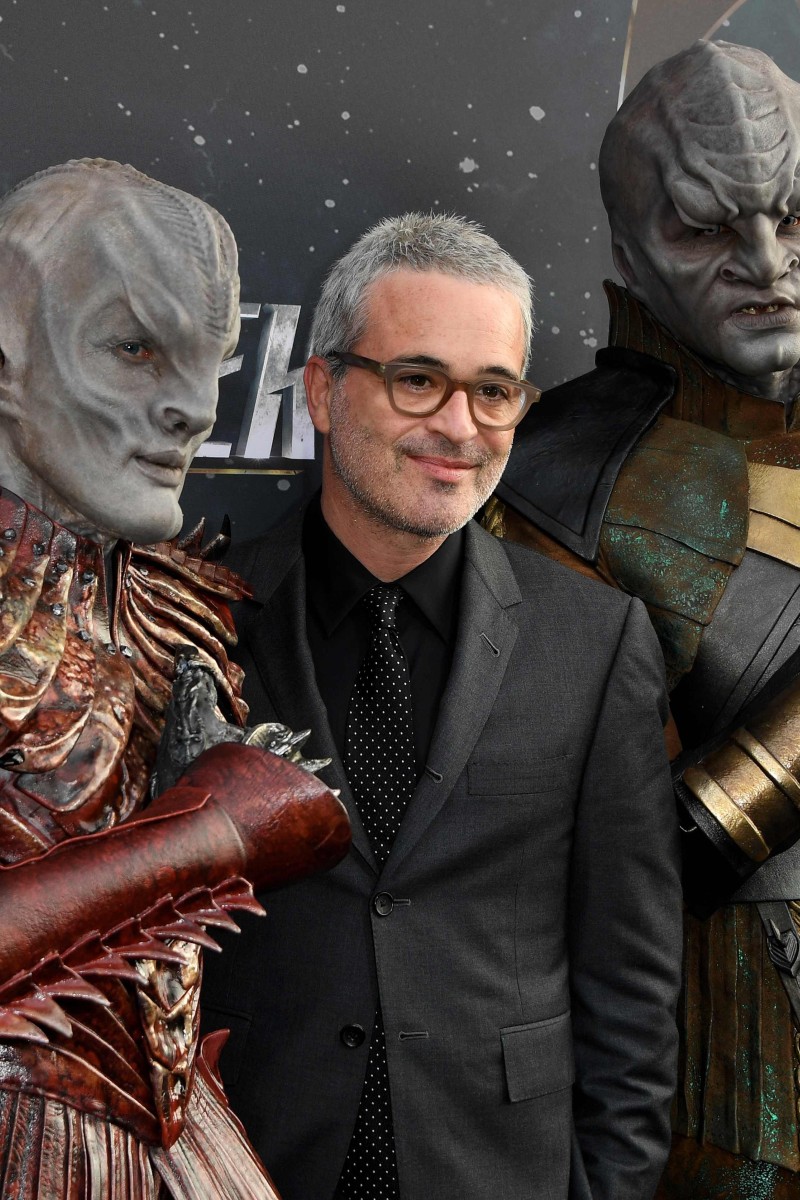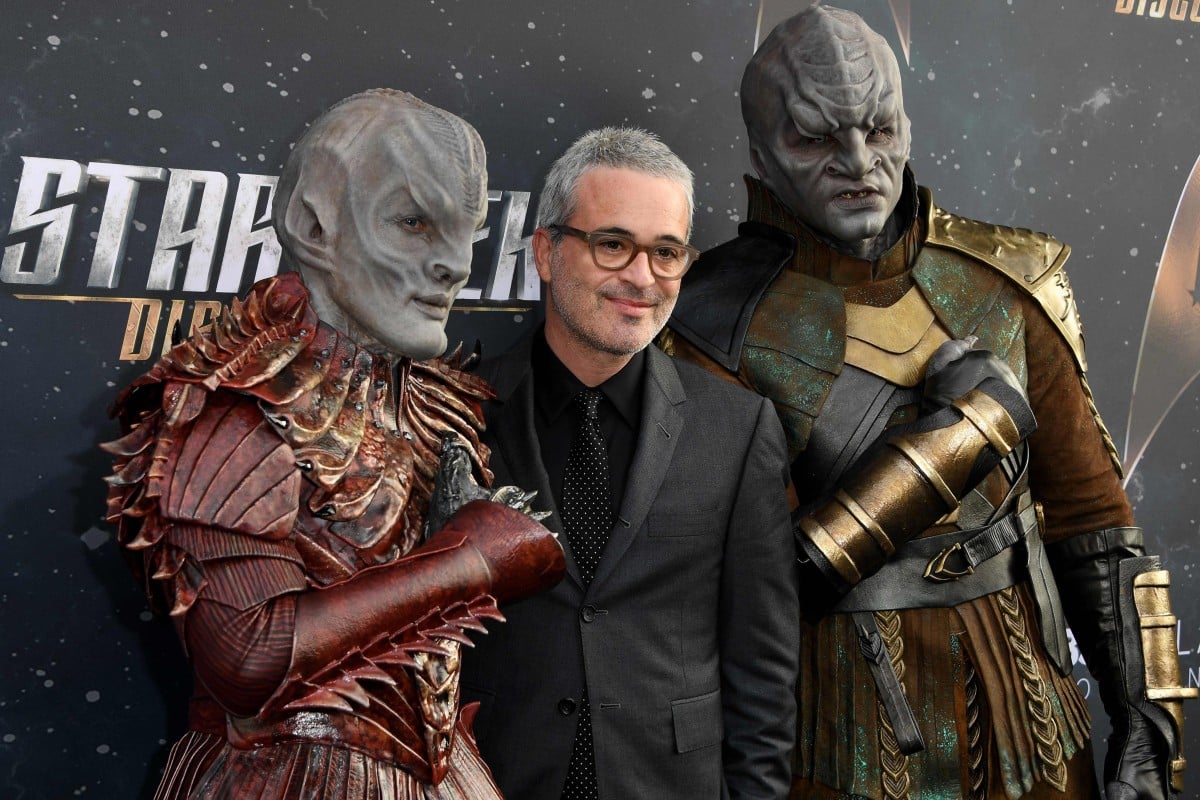
Star Trek: Discovery on Netflix sees iconic Klingons get an expert makeover
 Writer Alex Kurtzman is flanked by two of the new Klingons.
Writer Alex Kurtzman is flanked by two of the new Klingons. In Star Trek: Discovery, the Klingons stand out for the richness, detail and variety of their appearance.
As with real species, the latest depiction of the Star Trek aliens didn’t happen by accident. Think of it as evolution via producers, makeup and design experts teaming up for the first Star Trek series in a dozen years, which premiered Sunday on Netflix.
During an exclusive USA TODAY visit to Alchemy Studios, where Klingons and other Discovery aliens are created, Glenn Hetrick, a creature and makeup effects designer for the series, and creature and concept designer Neville Page — joined by Mary Chieffo, who plays Klingon battle deck commander L’Rell — explain how they explored form and function in designing the warrior species, which has had wildly varying appearances during a half-century of TV shows and films.
First, “respect the canon and the franchise. The Klingons need to look like Klingons.“ And yet, Page says, ”I thought this was a good opportunity to expand on it. The Klingons have ridges on their heads for a reason. What is that reason?“
Page and Hetrick, with former executive producer Bryan Fuller, imagined biological reasons for the Klingons’ appearance, with bony, protruding foreheads — especially among males — explained as the result of head-butting; and bald heads, arrayed with ridges and a long line of python-like sensory pits running from forehead down the back of the head, thought of as one large sensory organ.
“That was born out of Bryan saying he wanted them to be able to see, quite literally, behind themselves,” says Page.
The prosthetics and makeup help Chieffo embody her character.
“When I first put on … the L’Rell prosthetic, this head tilt started manifesting. It was amazing to realise the (head) shape and size informed my performance,” she says. “The lack of hair is empowering and logical, having these sensors and (Klingons) being very sensual creatures.”
Realistic, detailed prosthetics and makeup help Discovery depict individualised, complex Klingons rather than the usual two-dimensional villains (save for the honorable Worf from Star Trek: The Next Generation and Star Trek: Deep Space Nine).
The designers also wanted to illustrate the adaptation of a species represented by 24 houses, or family lines, with Discovery Klingons varying in color, styles of clothing and levels of facial scarring. (You won’t see the humanoid-looking Klingons of the original ‘60s series, which had more primitive makeup technology.)
“The Klingons come from an empire containing a ton of planets,” says Hetrick. “If you think about the cultural diversity that we’re able to exhibit in just a few thousand years on our planet, what would it be like if we existed on a group of planets?”
All that imagination wouldn’t matter if they couldn’t translate their concepts into a process that converts 25 actors into unique Klingon characters over a demanding 15-episode schedule.
Hetrick and Page employ advanced technology, starting with body scans and casts of actors, followed by computerised sculpting via a technique known as ZBrush and 3-D printing of prosthetics.
That cuts the time needed to apply makeup on set from up to eight hours to less than three.
For Chieffo, the transformation includes a cowl, silicone forehead and cheek pieces, false teeth, lips, contact lenses, glue and makeup, including “a sultry, sexy Klingon eyeliner,” she says.
“And I do love my gloves, my lady Klingon hands. It’s like a reptilian-feline combo,” says Chieffo, who enjoys the depiction of Klingons as cultured and sensual, and not just war-like.
“It’s liberating to not feel like I have to look a certain way in order to be a beautiful, empowered woman.”